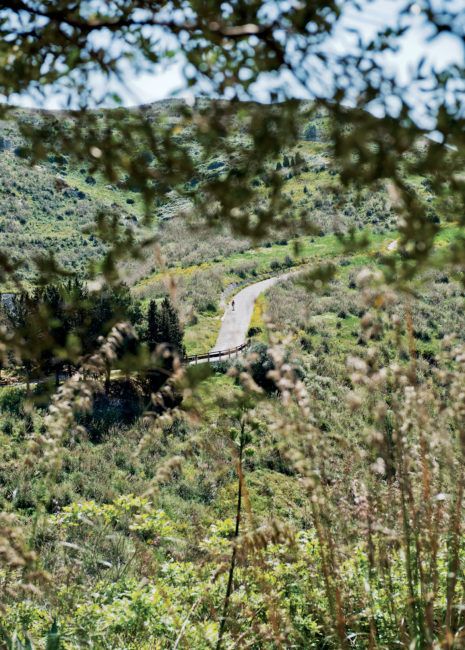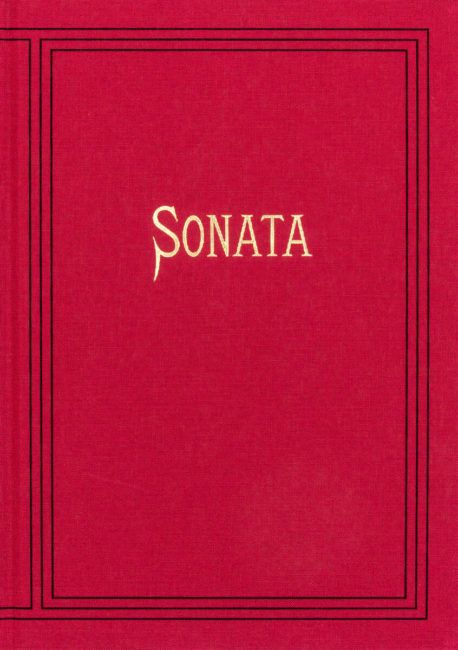blog
BOOK REVIEW: Sonata by Aaron Schuman
This is a different book.
Or, at least, it is a photographic project which, to be fully appreciated, needs a specifically literary introduction.
Johann Wolfgang von Goethe was born in Frankfurt am Main in 1749. He was a German writer, poet, playwright, essayist, but also painter, theologian, philosopher, humanist, scientist, art critic and music critic. For many he is a genius and he is usually considered one of the most representative examples in the European cultural panorama.
At the age of 30 he became a secret adviser and at 33 he obtained the nobility from Emperor Joseph II of Habsburg. During this period, due to numerous institutional commitments, Goethe was forced to give up his artistic life. This deprivation led him to leave Germany in 1786.
In 1786 Goethe, at the age of 37, embarked on his first trip to Italy. The journey, which was to last a few months, lasted for nearly two years. This experience led to the publication of the essay called, precisely, Italian Journey.
“The purpose of this magnificent journey of mine is not to deceive myself, but to know myself in the relationship with things.”
[Johann Wolfgang von Goethe]

Aaron Schuman, Image from SONATA (MACK, 2022). Courtesy of the artist and MACK.
Italian Journey is the account of the tour that changed the poet. In the journey and in the progressive contact with Italy and its works of art (and the fact that the author discovered for the first time physical, sensual love) Goethe found, through the synthesis of nature and art, all the poetic aspirations that his institutional commitments had largely repressed.
“At present I am preoccupied with sense-impressions…
Can I learn to look at things with clear, fresh eyes?
How much can I take it in at a single glance?
Can the grooves of old mental habits be effaced?
This is what I am trying to discover…”
[Johann Wolfgang von Goethe]
This is the epigraph of Goethe’s book chosen by Aaron Schuman for Sonata. Sonata is inspired by Goethe’s journey and his ways of dealing with it: favoring the impression of the senses instead of landscape.
Schuman retraces, in a photographic key, the stages of the tour in Italy and gives us a revisited but equally sensitive version. The works of art by which Goethe is fascinated are, from Guercino to Maratta to Titian, re-proposed with a different look and unusual cuts. Of the Madonna dei Pellegrini by Caravaggio, for example, is photographed a detail of the penitent’s dirty feet and of the frame of the painture.

Aaron Schuman, Image from SONATA (MACK, 2022). Courtesy of the artist and MACK.
Schuman’s work, like that of the German poet, does not dialogue directly with human figures. They are proposed only by interposition: only if they are already present in the works or in the images that are captured by the photographer’s eye.
Do you know the country where lemons bloom?
Golden oranges shine in the green foliage
A light wind blows from the blue sky
Quiet is the myrtle, serene the laurel
Do you know it?
Over there, over there
I would like to go with you, my beloved!
[Johann Wolfgang von Goethe]
There are the characterizing elements of Italian geography and imagination, such as olive trees and oranges, in whose synaesthetic synthesis (smell-image) we find the emotional approach of Italian Journey.

Aaron Schuman, Image from SONATA (MACK, 2022). Courtesy of the artist and MACK.
Schuman leaves nothing to chance and takes care to create Sonata’s scenography by inserting less noble elements in his narration but typical of the common Italian context (chips, eggs, details of a butcher’s shop, etc.).
The name of the work refers to a type of composition and its structure (allegro, minuet, closure) that the author takes as a reference. In the specific case Sonata has a structure in three parts: in the first part the themes of the work are presented, in the second part they are developed, in the third part the work is closed.
The last act of Schuman’s Journey to Italy ends with the black and white image of the full moon in a frame of branches and the epigraph “Et in Arcadia Ego”. The reference to Guercino’s work “Et in Arcadia Ego”, preserved at the National Gallery of Ancient Art in Palazzo Corsini in Rome, is explicit.
In the painting two shepherds appear observing a skull with a worm and a fly; the scene has no negative value and its message is intended to be an observation, the peaceful acceptance of nature and its continuous cycle of regeneration. Of life, of death, of resurrection.

Aaron Schuman, Image from SONATA (MACK, 2022). Courtesy of the artist and MACK.
Aaron Schuman is an American photographer also active in curating international exhibitions and festivals. Among his most popular works is SLANT which tells, in a different and grotesque way, of the American province through fake news and the growing paranoia of crime. He currently lives in the UK and is Associate Professor of Photography and Visual Culture at the University of the West of England (UWE Bristol).
Sonata is published by Mack, who needs no further introduction. It is not an easy book. It is a work that, in order to be appreciated, needs some literary reference to Goethe and his work.
Italian Journey was born from the need of Goethe to know himself through the journey and led to the achievement of an order and an inner harmony that was missing. The ability to be amazed. It is something that I also catch in Schuman’s work: Goethe’s text is used as an invitation to travel that becomes a tool for self-analysis, through images, for the photographer.
Sonata is for the author the achievement of a condition of inner peace. Of a balance.
– “Et in Arcadia Ego” –

SONATA
byAaron Schuman
Embossed hardcover
17 x 24 cm, 120 pages
Publication date: July 2022
ISBN 978-1-913620-58-5
€45 £35 $55
published by MACK – www.mackbooks.co.uk
Location: Online Type: Book Review
Events by Location
Post Categories
Tags
- Abstract
- Alternative process
- Architecture
- Artist Talk
- Biennial
- Black and White
- Book Fair
- Car culture
- charity
- Childhood
- Children
- Cities
- Collaboration
- Cyanotype
- Documentary
- environment
- Event
- Exhibition
- Family
- Fashion
- Festival
- Film Review
- Food
- Friendship
- FStop20th
- Gun Culture
- Italy
- journal
- Landscapes
- Lecture
- love
- Masculinity
- Mental Health
- Museums
- Music
- Nature
- Night
- photomontage
- Podcast
- Portraits
- Prairies
- River
- Still Life
- Street Photography
- Tourism
- UFO
- Wales
- Water
- Zine

Leave a Reply